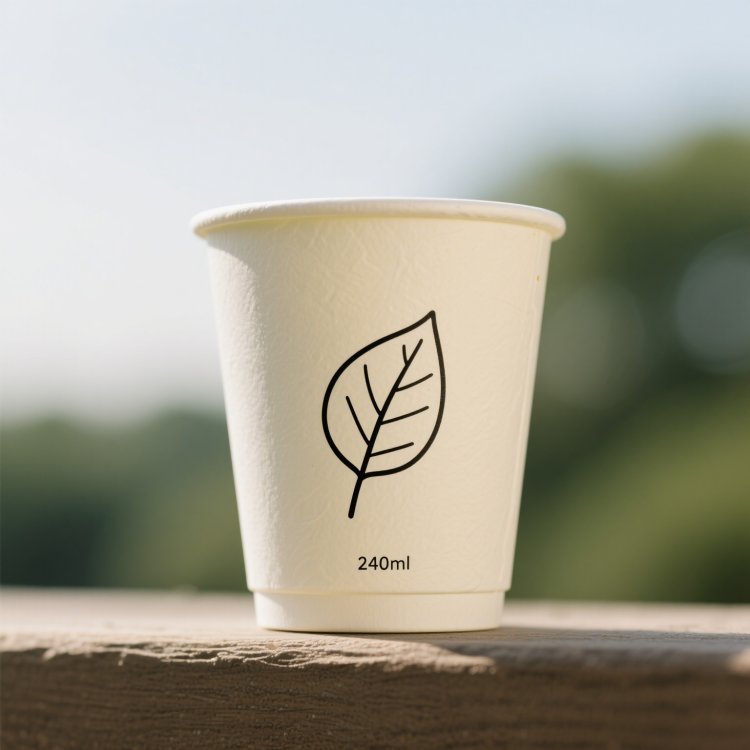Liquid Volume Conversions That Matter: From 10oz to Cups and More
Master liquid conversions like 10oz to cups and 240 ml to cups while exploring PLA, bagasse, and cornstarch eco cup options for global use.

In the global world of food packaging, sustainability, and international recipes, volume conversion is more than just a convenience—it’s a necessity. Whether you’re manufacturing PLA cups, designing labels for cornstarch cups, or comparing drink volumes across different standards, you’ve likely found yourself asking questions like “10oz to cups?” or “240 ml to cups?”
In this article, we’ll break down popular volume conversions between ounces (oz), milliliters (ml), and cups, and explore how these measurements tie directly into the practical world of eco-friendly disposable cups like bagasse and paper alternatives.
Understanding Liquid Volume Units
Let’s begin with the basics:
-
Ounces (oz): Primarily used in the United States.
-
Milliliters (ml): Standard unit in most other countries.
-
Cups: In the U.S., 1 cup = 8 fluid ounces (fl oz) = approximately 237 ml.
In metric terms, especially in Australia and parts of Europe, 1 cup = 250 ml.
This discrepancy makes conversions critical in international product labeling, especially for food containers and drinkware.
Key Conversions You Should Know
Let’s tackle two of the most frequently searched conversions:
| Quantity | In Cups (US) | In Milliliters |
|---|---|---|
| 10oz to cups | 1.25 cups | 295.74 ml |
| 240 ml to cups | ~1.01 cups (US) | 240 ml |
Here’s a quick overview of other related conversions for context:
-
8 oz = 1 cup
-
250 ml = ~1.06 cups (US)
-
300 ml = ~1.27 cups
-
700 ml = ~2.96 cups
So, if you're asking “how many cups is 240 ml?”, the answer is just slightly over 1 U.S. cup.
If you're wondering “10oz to cups?”, it’s 1¼ cups.

Real-World Application: Eco-Friendly Cups and Volumes
Let’s move beyond math. Why do these conversions matter?
In the world of eco-disposable packaging, accurate volume measurement is essential for product design, customer understanding, and regulatory compliance. Whether you're developing a line of cornstarch cups for hot drinks or PLA cold cups for smoothies, understanding volume is vital.
1. PLA Cups
-
Typically used for cold beverages.
-
Common sizes: 10 oz, 12 oz, 16 oz.
-
10oz to cups = 1.25 cups — a standard for iced coffee or juice.
These cups must be clearly labeled with both oz and ml for global use. A 10oz PLA cup equals about 295 ml.
Cornstarch Cups
-
Derived from corn-based polymers, they are compostable and microwave-safe.
-
Ideal for hot drinks or soups.
-
A 240 ml to cups label helps identify portion sizes — equivalent to ~1.01 U.S. cups.
Their biodegradable nature and versatility make them suitable for takeaway chains that prioritize eco-packaging.
Bagasse Cups
-
Made from sugarcane fiber, offering strength and heat resistance.
-
Commonly used for both hot and cold applications.
-
Sizes often include 250 ml, 300 ml, and 500 ml options.
Paper Cups
-
Often lined with PLA or water-based coatings to ensure compostability.
-
A classic 8 oz paper cup = 1 cup, and 240 ml = ~1.01 cups, making these sizes nearly interchangeable.
Labeling Matters: Why Dual Units Are Important
When a 10oz cup is labeled only in ounces, international customers might hesitate. They don’t always understand US customary units. The same goes for 240 ml—without the cups equivalent, some customers lack the visual reference to understand the cup’s size.
By printing both oz and ml, and even cups when applicable, packaging becomes:
-
Easier to understand globally
-
More compliant with export requirements
-
More appealing in e-commerce listings
Use Cases in Food Service
Here’s how understanding conversions benefits various sectors:
For Cafés and Coffee Shops
A cappuccino is typically 8 oz to 10 oz. Knowing that 10oz to cups = 1.25 cups helps baristas serve consistent portions.
PLA or paper cups used here must match international cup expectations.
For Takeaway Services
Soup portions are commonly served in 240 ml to 300 ml containers.
Using cornstarch or bagasse cups, clearly stating “240 ml (~1 cup)” helps consumers manage calorie expectations and serving sizes.
For E-commerce
Amazon and Alibaba listings with both “10oz (1.25 cups)” or “240 ml (~1 cup)” boost conversion and reduce returns.
Pro Tip: Create a Conversion Chart for Your Brand
If your business manufactures or sells eco-disposable cups, consider adding a conversion chart to your website or product labels. For example:
“This 10oz PLA cup holds 1.25 U.S. cups or approximately 295 ml of liquid. Suitable for cold beverages.”
Such clear communication enhances brand trust.
Sustainability and Clarity Go Hand in Hand
Clarity in measurements reinforces your brand's credibility, while offering biodegradable, compostable cups like bagasse, cornstarch, or PLA shows your commitment to sustainability.
Combining volume precision with eco-values gives your brand a double advantage: environmental responsibility and international accessibility.
Conclusion: Convert Smart, Serve Smarter
Next time you calculate 10oz to cups or wonder about 240 ml to cups, remember—it’s not just numbers. These conversions directly impact how customers perceive your product, how recipes turn out, and how environmentally responsible your choices are.
If you’re in the eco packaging business, it’s time to master both conversions and materials. Your customers—and the planet—will thank you.
What's Your Reaction?
















.jpg)
.jpg)

